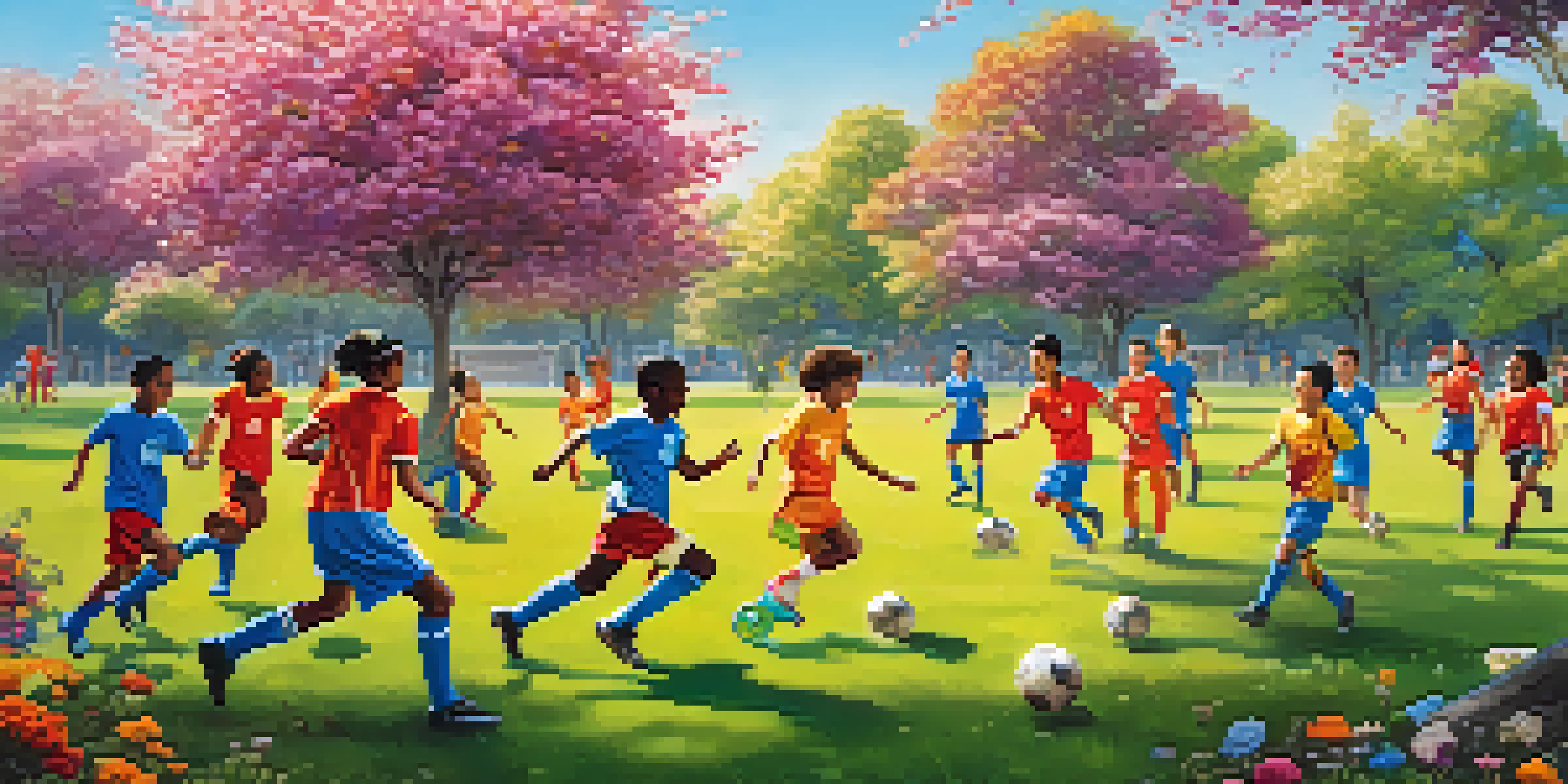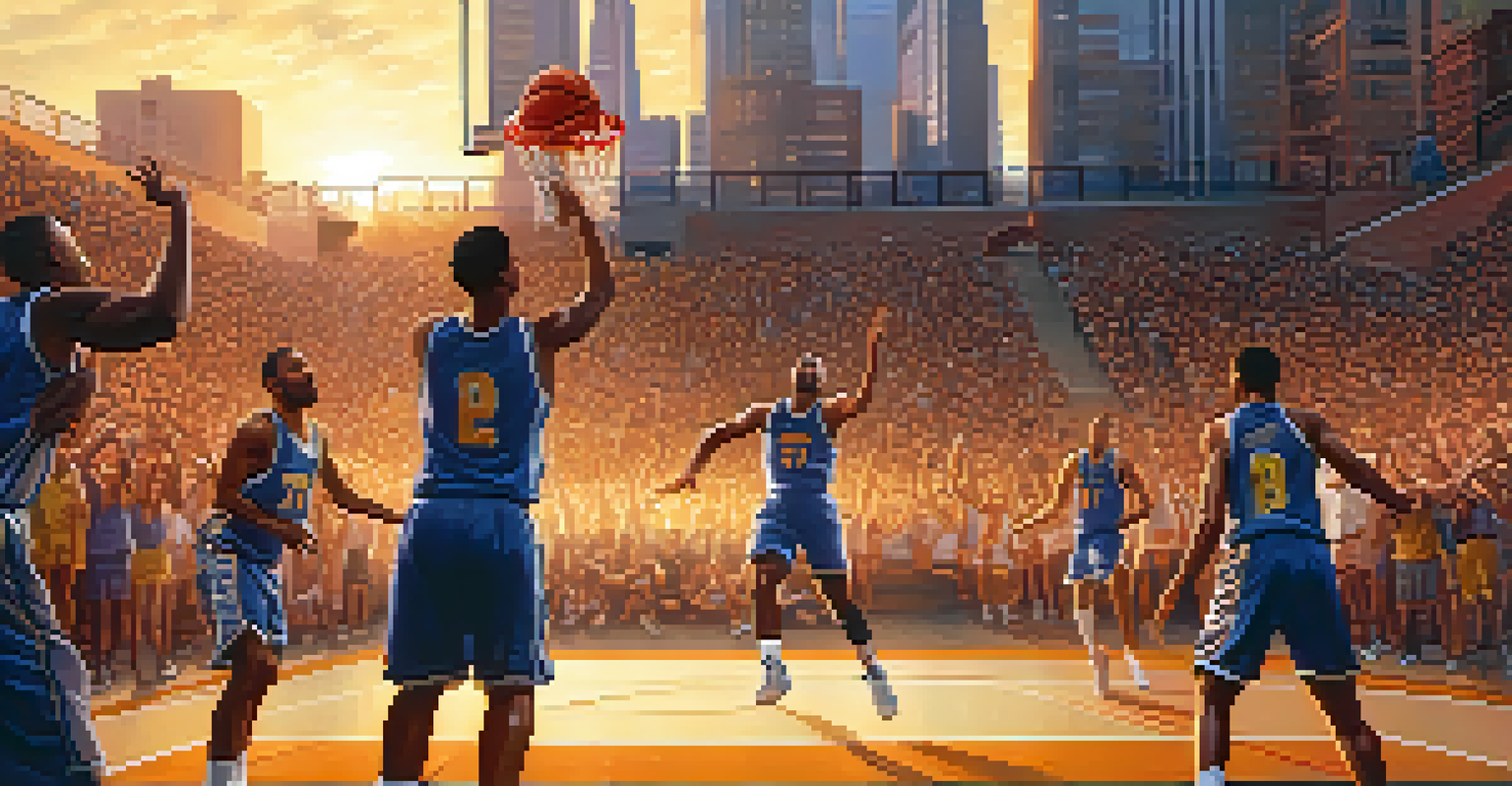The Role of Sports in Hollywood's Global Storytelling

The Intersection of Sports and Storytelling in Film
Sports and storytelling have a long, intertwined history. From classic films to modern blockbusters, sports often serve as a backdrop for character development and plot advancement. They provide a relatable framework that audiences can connect with, regardless of their cultural background.
Sports are a microcosm of society, reflecting the issues and challenges we face in our daily lives.
Take, for example, movies like 'Rocky' or 'Remember the Titans.' These films not only highlight the sport itself but also delve into themes of perseverance, teamwork, and overcoming adversity. Such narratives resonate with viewers, making them feel a part of something larger than themselves.
By leveraging sports, filmmakers can create universal stories that transcend borders, drawing in diverse audiences and sparking conversations around shared experiences and emotions.
Cultural Representation Through Sports in Film
Hollywood has a unique ability to reflect and shape cultural narratives. Sports films often spotlight underrepresented communities, showcasing their struggles and triumphs. This representation fosters empathy and understanding among global audiences.

For instance, films like 'Bend It Like Beckham' not only tell a story about soccer but also address issues such as gender roles and cultural expectations. These narratives encourage viewers to engage with cultures different from their own, promoting inclusivity.
Sports Unify Through Shared Stories
Filmmakers use sports as a backdrop to create universal narratives that resonate with diverse audiences.
By portraying sports as a vehicle for cultural exchange, filmmakers help dismantle stereotypes and celebrate diversity, ultimately enriching the storytelling landscape.
The Global Appeal of Sports Storylines
One of the most remarkable aspects of sports is their universal appeal. Regardless of language or geography, the excitement of competition and the spirit of sportsmanship resonate with everyone. This global connection makes sports an ideal theme for filmmakers.
The only way to prove that you’re a good sport is to lose.
Consider the global phenomenon of the FIFA World Cup. Documentaries and feature films centered around this event attract audiences worldwide, highlighting stories of hope, perseverance, and national pride. These narratives not only entertain but also foster a sense of global unity.
By tapping into the universal language of sports, filmmakers can create compelling stories that capture hearts and minds across continents.
The Role of Sports Icons in Film
Sports icons often transcend their athletic achievements, becoming cultural symbols. When these figures appear in films, they bring their larger-than-life personas along, attracting audiences who admire them. This phenomenon can significantly boost a film's appeal.
Take Michael Jordan in 'Space Jam' as a prime example. His star power not only drew basketball fans but also appealed to a younger audience who may not have been familiar with basketball. This blend of sports and entertainment has the power to captivate diverse demographics.
Cultural Narratives in Sports Films
Sports films often highlight underrepresented communities, promoting empathy and understanding among viewers.
By incorporating sports icons into storytelling, filmmakers create a bridge between sports and cinema, enhancing the narrative with real-life inspiration.
Sports as a Catalyst for Social Change in Film
Sports have often been at the forefront of social change, making them a powerful narrative tool in Hollywood films. They can highlight social issues such as racism, inequality, and justice, prompting audiences to reflect on these critical topics.
Movies like 'The Blind Side' and '42' tackle themes of racial discrimination and the fight for equality through the lens of sports. These stories not only entertain but also inspire viewers to engage with important societal issues.
By weaving social commentary into sports narratives, filmmakers encourage dialogue and action, using the emotional weight of storytelling to drive change.
The Influence of Technology on Sports Storytelling in Film
Advancements in technology have greatly transformed how sports stories are told in film. High-definition visuals, slow-motion replays, and immersive sound design enhance the viewing experience, bringing the excitement of sports to life like never before.
Films like 'The Last Dance' utilize cutting-edge technology to create a captivating narrative around Michael Jordan's career. The combination of archival footage and modern storytelling techniques captures the essence of sports while engaging audiences on a deeper level.
Technology Enhances Sports Storytelling
Advancements in technology transform sports narratives in film, creating immersive experiences that captivate audiences.
As filmmakers continue to embrace technological innovations, the potential for dynamic sports storytelling only expands, captivating viewers and enriching their experience.
Future Trends: Sports in Global Storytelling
As we look to the future, the role of sports in storytelling is likely to evolve. With the rise of streaming platforms and an increasing focus on global narratives, filmmakers are presented with new opportunities to explore sports themes in diverse ways.
We may see more collaborations between filmmakers and athletes, resulting in authentic portrayals of sports culture. Furthermore, the blending of genres, such as documentaries and scripted films, can provide fresh perspectives and innovative storytelling methods.

Ultimately, the future of sports in Hollywood storytelling holds exciting potential, promising to engage audiences while fostering a greater understanding of our shared human experience.